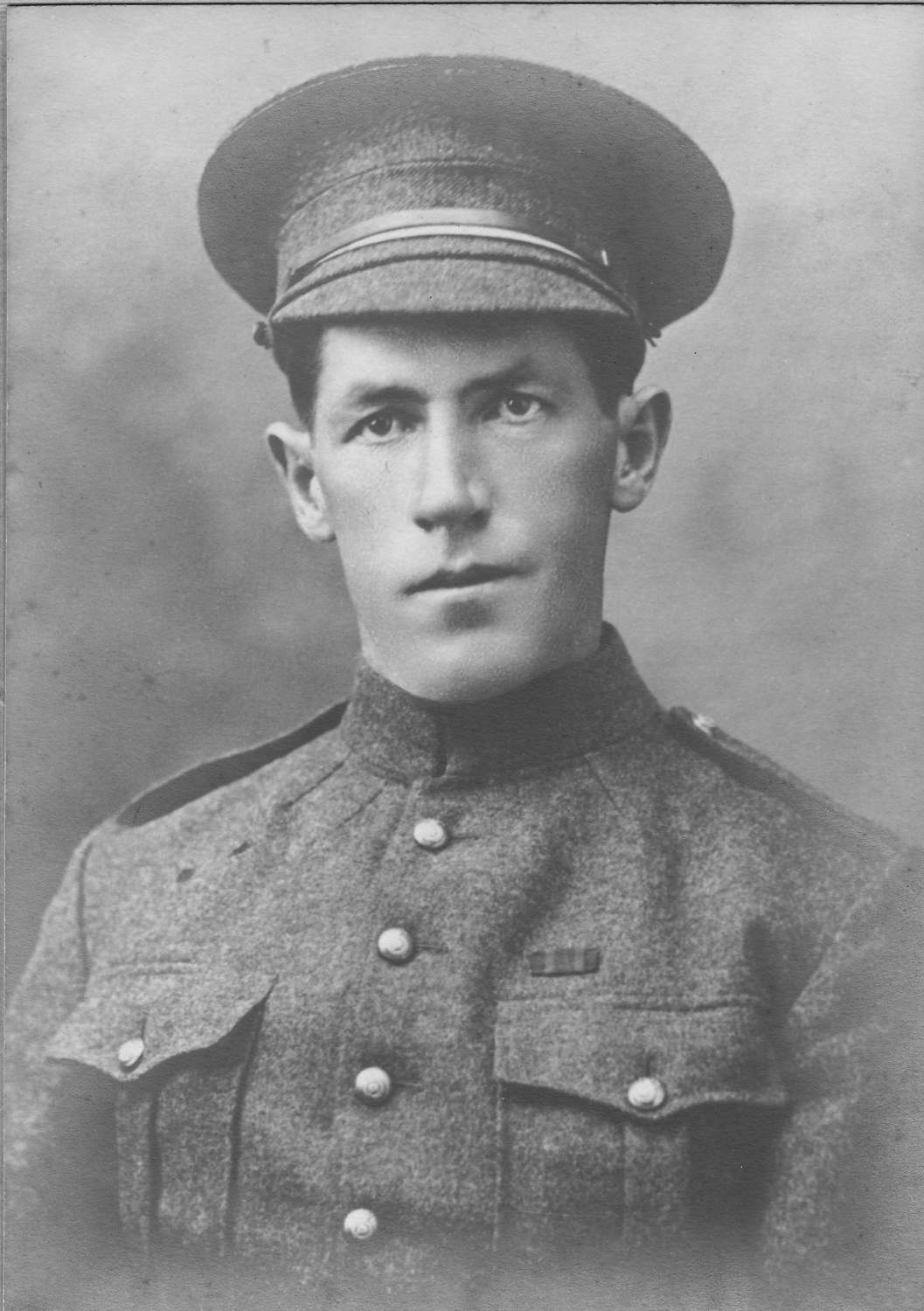Private Frank Callan - WWI
Private Frank Callan - WWI
By Stephen Smith, local military historian
Frank Callan was born May 26,1881 in Oxford County Ontario to Michael and Sarah (nee Britton) Callan. Frank and his father both worked at the Innerkip Lime Kiln Company; Frank even worked as a lime burner, which is an extremely dangerous job.
Frank was no stranger to wearing a military uniform in fact he had served during the South African War from March 1901 to March of 1903. During his first time in uniform, Frank served with the South African Constabulary (SAC) which was raised and commanded by Major-General Robert Baden-Powell who is most famous for the creation of the Boy Scouts movement. Baden-Powell famously expressed a desire to 'get as many of the Canadians in his force as possible'. Over 1200 Canadians served in the SAC, some of whom had already contributed to Canadian history, and Frank had the distinction of being counted among those who could claim they served in the same unit as Sam Steele of North West Mounted Police fame.

Portrait of Private Frank Callan. From Stephen Smith's personal collection.
When War was declared on Aug 4 1914 Frank didn’t waste any time in heading to the closest military facility in London Ontario to enlist. He officially signed his attestation papers 26 August 1914 as a member of the Princess Patricia’s Canadian Light Infantry (PPCLI) with a regimental service number of 1238. He is described on his attestation papers as 5’ 9.5” tall, brown hair and eyes, with a fresh complexion.
By December 21, 1914 the regiment had made its way from Canada to England and from there had landed in France with the 27th Division. This gave the PPCLI the distinction of being the only Canadian infantry regiment who were active in a theatre of war in 1914. The PPCLI spent a significant amount of time in the area in and around St. Eloi in 1914 and into March of 1915. Here they saw some very trying time both from combat and environmental conditions. In March of 1915, the regiment was pulled out of the St. Eloi area to reorganize at Poperinghe, then moved north in April 1915. The PPCLI was at Poelcappelle approximately three weeks when the poison-gas attack against the 1st Canadian Division kicked off the “Second Battle of Ypres”. Eleven days later the 27th Division with the PPCLI were engaged by the second prong of the German offensive.
“The Battle of Frezenberg and Bellewaerde Ridges”; by April 7,1915 the regiment had moved in the brigade support at Bellewaerde Lake and by the 9th had moved to the front line defensive positions in Polygon Wood. During the German attack in May, the PPCLI halted their advance by counter-attacking; however, this was achieved at a very heavy cost of over 390 casualties.
It was during this battle, on May 8, 1915 that Private Frank Callan was killed in action. In a letter to Callan’s mother dated May 28, 1915, Lieut. Talbot M. Papineau describes Callan: “He was absolutely courageous, but a skilled and cautious guide.” …”He was killed fighting and where the fighting was fiercest. He fell where the Company Sergeant and six others died. There was no man better liked among his comrades or his officers.”

Image credit: Princes Patricia's Canadian Light Infantry Vol I 1914-1919, chapter 2, pg 76. Published in 1923.
When the news of Frank’s death reached Innerkip many residents were saddened. As a member of the Oak Branch Masonic Lodge, and the C.O.F. Lodge of Innerkip, he was known and liked by many. There can be no doubt that his mother, four brothers, and his sister were left numb and in shock from the news, especially when they were still dealing with the death of Frank’s father Michael in April of 1914.
It is important at this time of year to not only honour the soldiers who sacrificed but also give some thought to the fallout from the loss to the families. Lest we forget.
